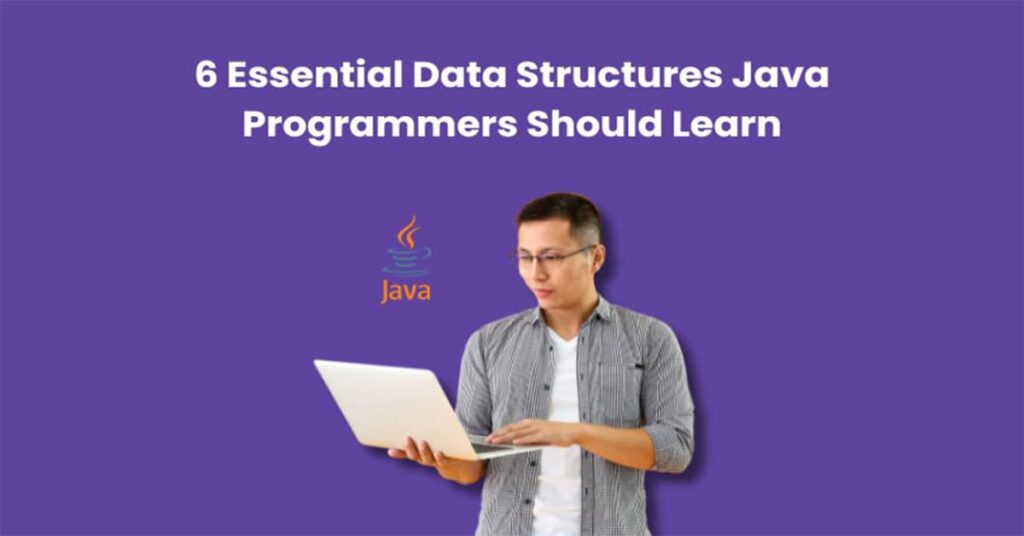6 Essential Data Structures Java Programmers Should Learn
Java is a versatile and widely-used programming language, and for aspiring Java developers, understanding data structures is crucial. Data structures are the backbone of any program, determining how efficiently data can be stored, accessed, and manipulated. Whether you are preparing for a Java certification or just looking to improve your skills, mastering Data Structures in Java is a must. In this blog, we’ll explore six essential data structures that every Java programmer should learn to enhance their Java programming skills and increase their chances of success in Java Certification exams.

Arrays
Arrays are one of the most basic and basic data structures in Java. They enable the storage of a collection of components of the same data type. Arrays are extremely beneficial when you have a limited amount of objects and need to retrieve them quickly using an index. Arrays in Java are zero-indexed, which means the first element is at index 0, the second at index 1, and so on. Understanding arrays is critical for anybody starting in Java programming.
Linked Lists
Linked lists are dynamic data structures made up of nodes that each have a value and a reference to the next node. Java supports both single and doubly linked lists. In comparison to arrays, linked lists are more efficient for insertions and deletions since they do not need element shifting. They’re especially beneficial when you need to alter a group of components often.
Stacks
A stack is a kind of data structure that operates on the Last-In, First-Out (LIFO) principle. In Java, you may create a stack by using either the Java.util.Stack class or the more recent Java.util.Deque interface. Stacks are often employed in algorithms and applications that need function call tracking, undo functionality and expression parsing.
Queues
Queues, on the other hand, adhere to the concept of First-In, First-Out (FIFO). Java has a built-in utility called Java. util. There are various implementations of the Queue interface, including LinkedList and ArrayDeque. Understanding queues is critical for addressing challenges with resource management or job scheduling in a fair way.
Hash Maps
The Java. Util.HashMap is a popular key-value pair storage data structure. It provides constant time complexity for fundamental activities such as adding and retrieving entries. Hash maps are often used in applications that need quick lookups, such as constructing caches and indexing data.
Trees
Trees are hierarchical data structures with several uses. Trees may be worked with in Java, including binary trees, binary search trees (BSTs), and balanced trees. Trees are particularly useful in database systems, compilers, and algorithms such as binary search and sorting. Understanding tree topologies and algorithms may help with programming as well as passing Java certification examinations.
Many complex data structures, algorithms, and design patterns in Java are built on these six data structures. Learning these structures may help you solve problems more efficiently and provide you with more options as a programmer.
If you want to pass the Java certification exam, you need to study data structures. Certification exams often probe candidates’ knowledge of Java’s data structures. If you have a firm knowledge of these fundamental data structures, you will be better prepared to tackle these challenges and succeed in your pursuit of a Java certification.
Conclusion
Data structures are the backbone of organized and streamlined code. Learning the various data structures that are available in Java is crucial to progressing as a Java programmer. Whether your goal is to improve your current Java skills or to pursue a formal Java certification, a solid grounding in these six data structures is an absolute must.
Now is the time to expand your coding horizons into the world of Java data structures. Coding is fun, so enjoy it!

